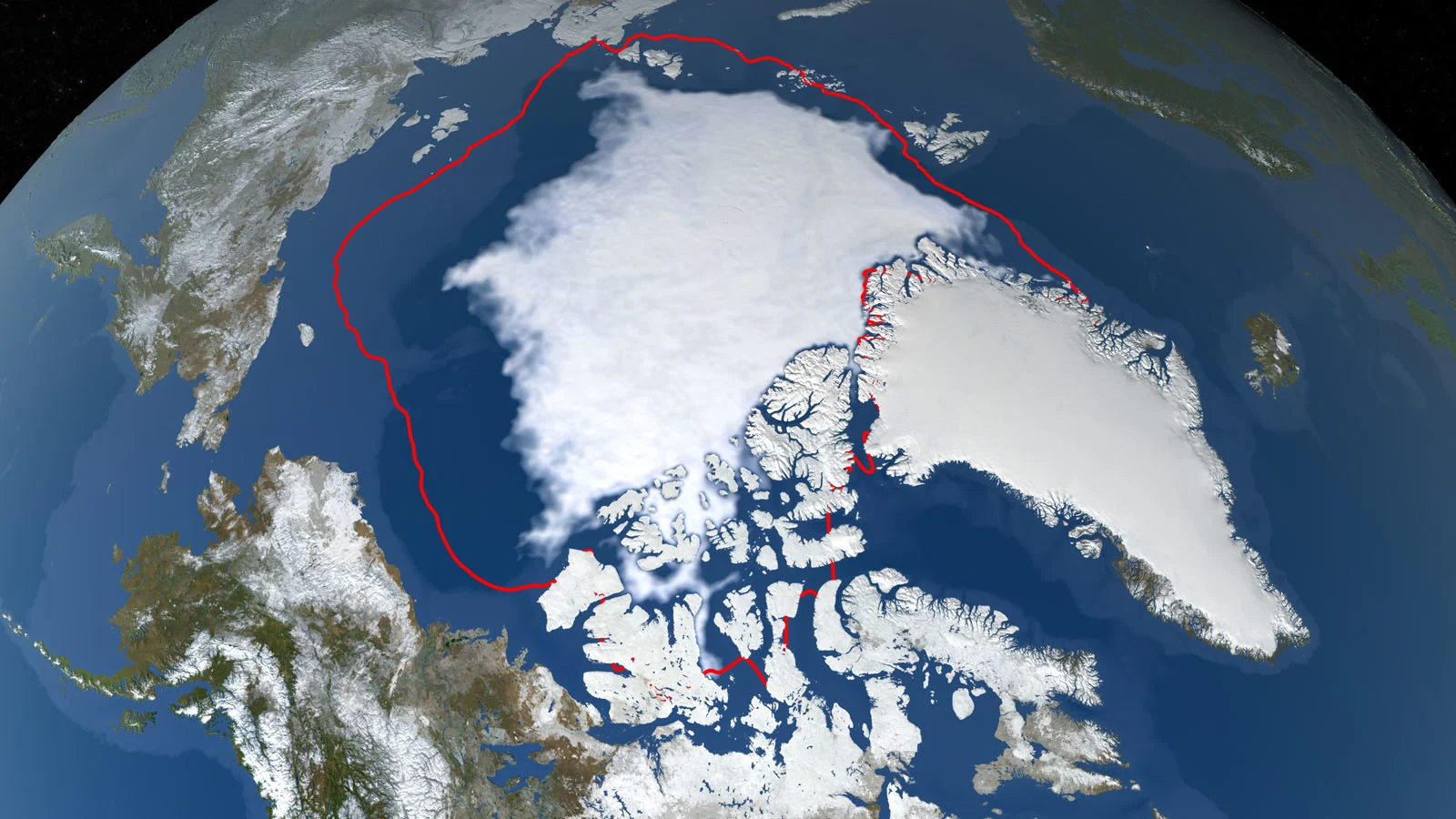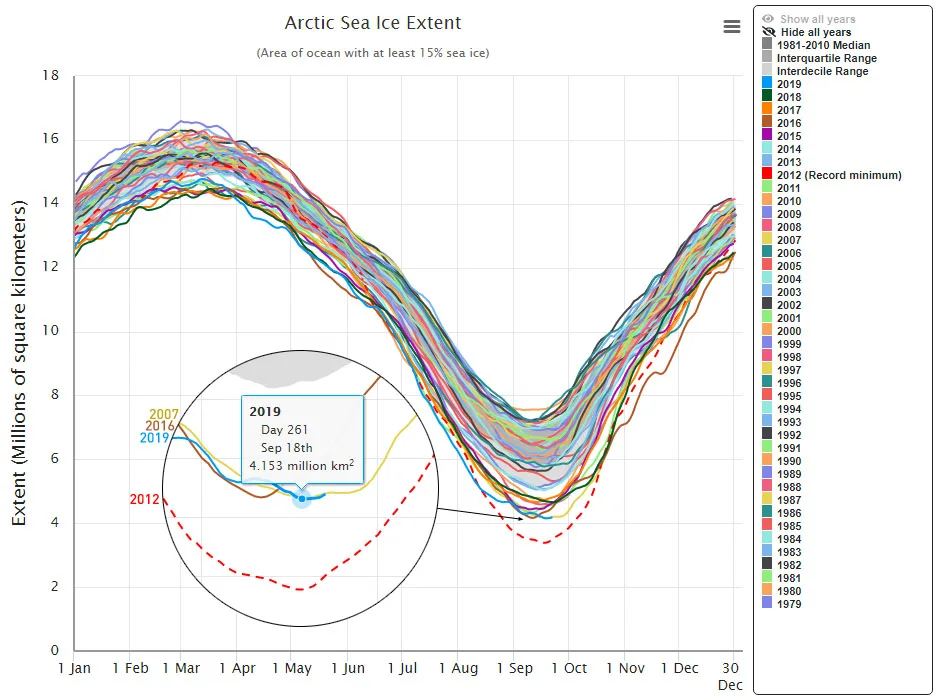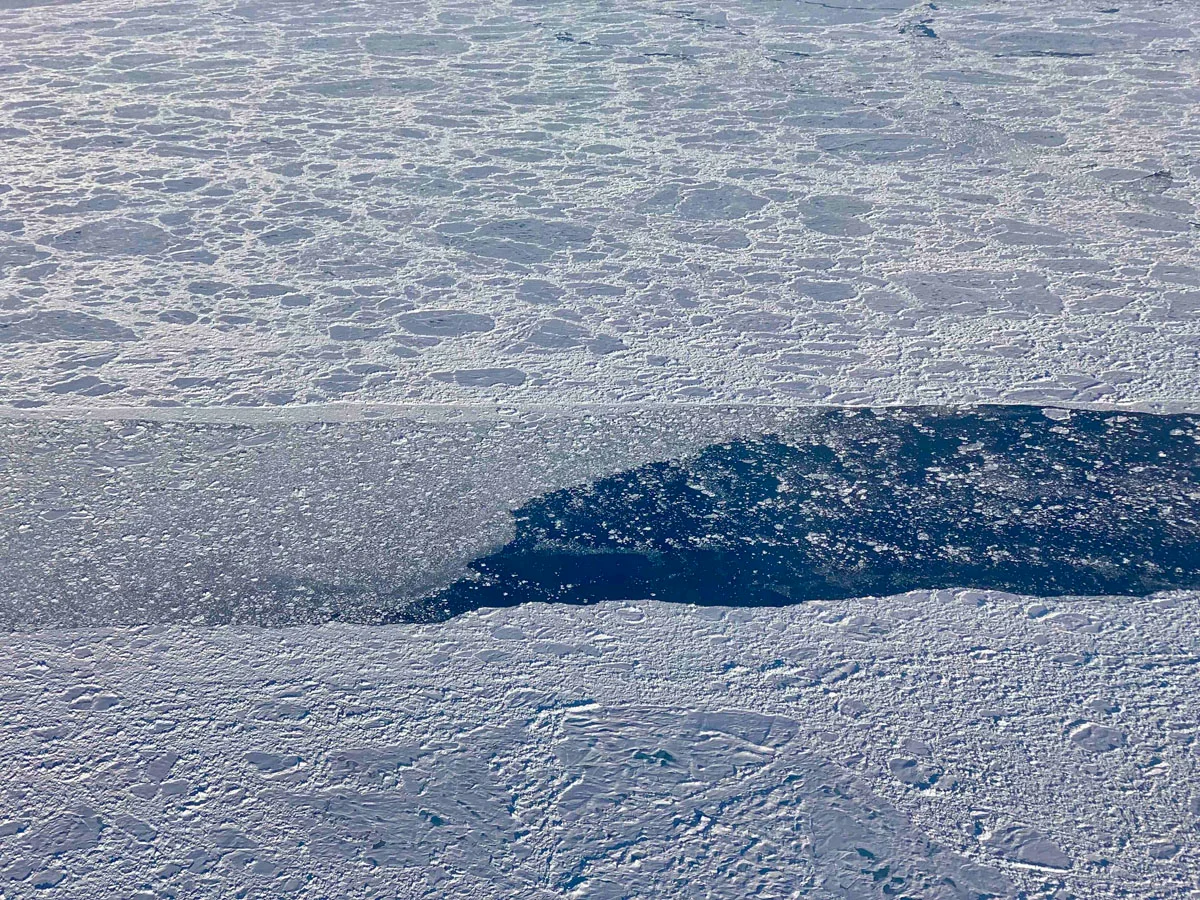
Arctic sea ice ties for 2nd smallest summer minimum on record
No sign that Arctic sea ice extent is recovering
According to the latest records from NASA and the National Snow and Ice Data Center (NSIDC), Arctic sea ice reached its final minimum extent for summer 2019.
On September 18, the extent reached a minimum of 4.15 million square kilometres, putting 2019 now in an official three-way tie, with 2007 and 2016, for the 2nd lowest extent in the satellite record.

This map shows the September 18, 2019 Arctic Sea Ice extent (blue-white), compared to the 1981-2010 average minimum extent (red line). Credit: NASA Goddard
From late-June to mid-August, the sea ice extent had dropped to a point where it was tracking at or below the 2012 minimum extent. This being the first year since 2012 that the extent was that low for that long during the melt season raised concerns that this year could see a new record low.

This graph shows the wax and wane of Arctic sea ice, year by year from 1979 to 2019, with the 2012 lowest minimum extent emphasized with the red dashed line. The insert shows a zoomed view of the lowest four years - 2007, 2016 and 2019 tied for 2nd lowest, and 2012 as the lowest on record. Credit: NSIDC/Scott Sutherland
"This was an interesting melt season," Walt Meier, a sea ice researcher at NSIDC, told NASA. "At the beginning of August we were at record low ice levels for that time of the year, so a new minimum record low could have been in the offering."
”But unlike 2012, the year with the lowest ice extent on record, which experienced a powerful August cyclone that smashed the ice cover and accelerated its decline, the 2019 melt season didn't see any extreme weather events," Meier explained. "Although it was a warm summer in the Arctic, with average temperatures [4 to 5 degrees Celsius] above what is normal for the central Arctic, events such as this year's severe Arctic wildfire season or European heat wave ended up not having much impact on the sea ice melt."

This opening in the sea ice cover, partially filled in by much smaller sea ice rubble and floes, was spotted north of Greenland by an Operation IceBridge flight on Sept. 9, 2019. Credits: NASA/Linette Boisvert
Currently, NSIDC records the four lowest Arctic sea ice extents as (with 2019, 2007 and 2016 in a statistical tie):
2012 at 3.39 million square kilometres
2019 at 4.15 million square kilometres
2007 at 4.16 million square kilometres
2016 at 4.17 million square kilometres
According to the NSIDC, Arctic sea ice extents have been on the decline for decades, with the 13 lowest extents in the satellite era have all occurred in the last 13 years.
"This year's minimum sea ice extent shows that there is no sign that the sea ice cover is rebounding," Claire Parkinson, a senior climate change scientist at NASA’s Goddard Space Flight Center, said in a press release on Monday.
"The long-term trend for Arctic sea ice extent has been definitively downward," Parkinson added. "But in recent years, the extent is low enough that weather conditions can either make that particular year's extent into a new record low or keep it within the group of the lowest."
From here, unless the Arctic sees some kind of exceptional weather event, sea ice extent should grow again, towards its next maximum, which will likely be reached sometime in March 2020.












